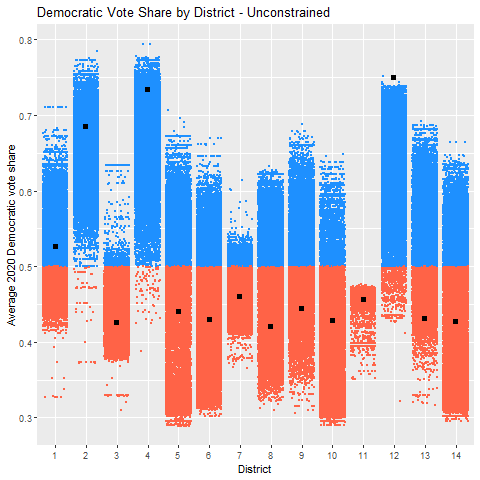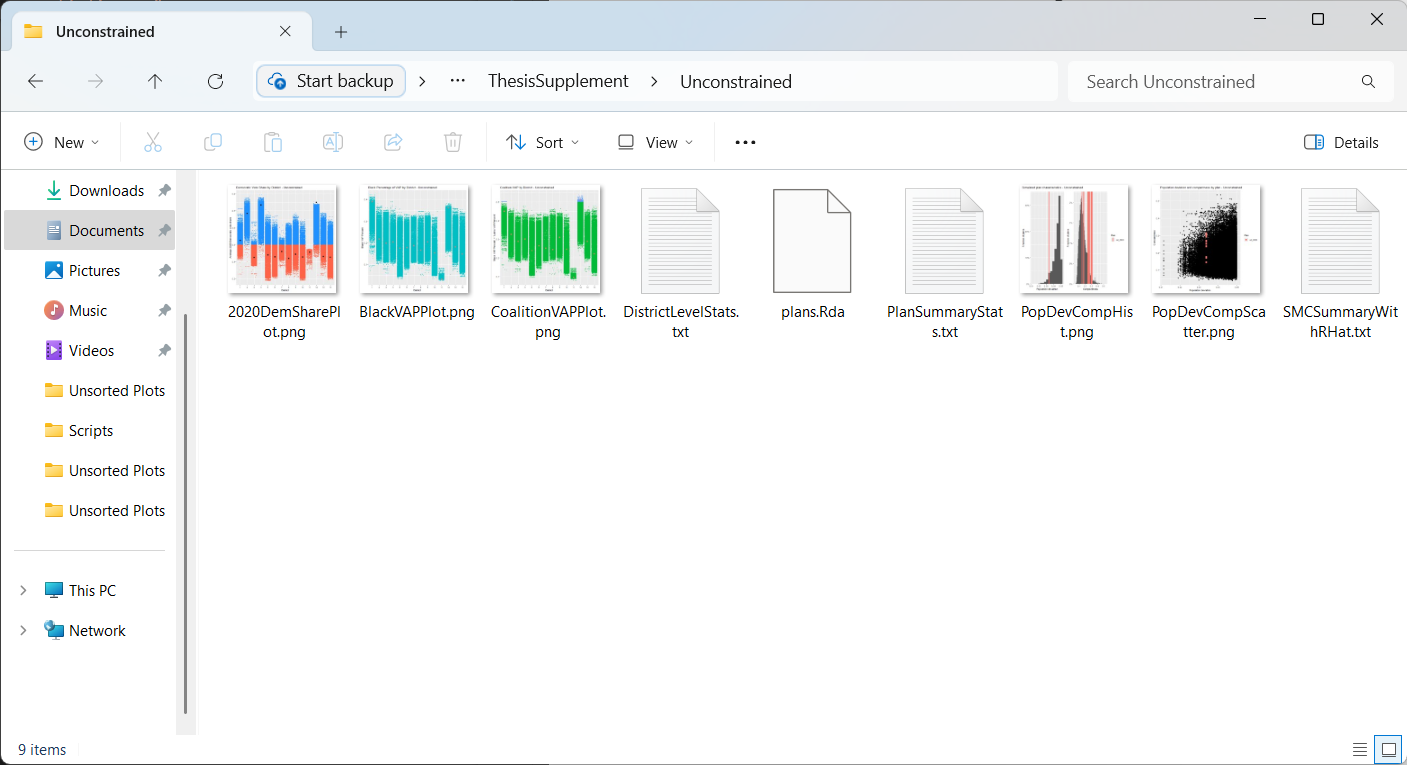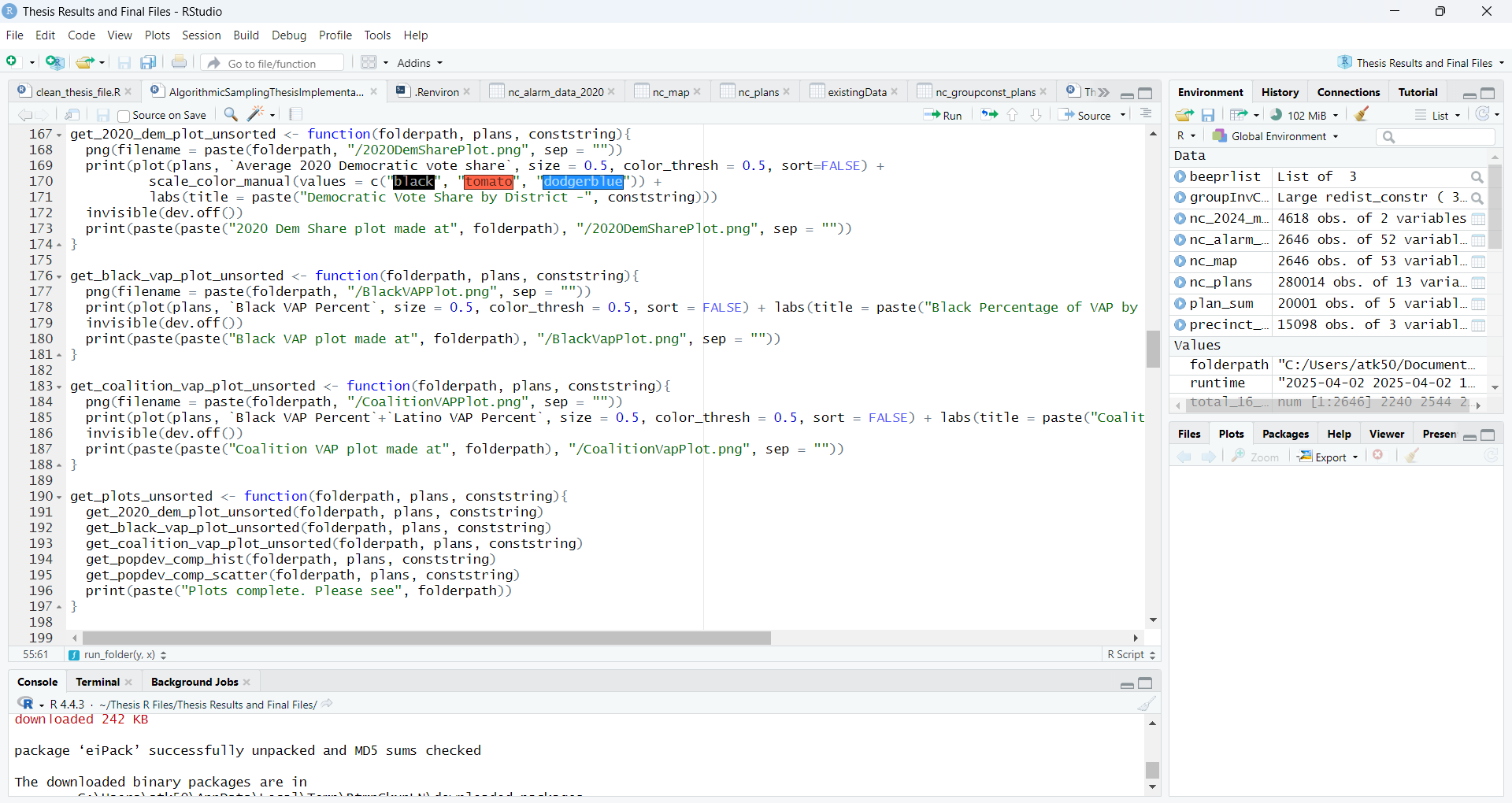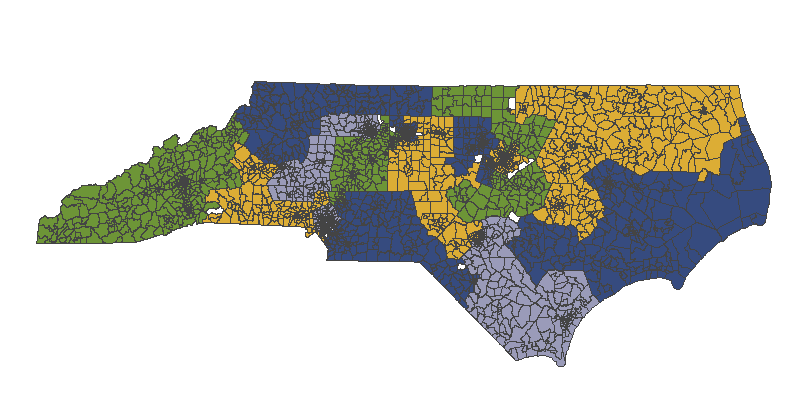Drawing the Line: Algorithmic Redistricting and the Supreme Court
A Senior honors thesis submitted to the Wesleyan University Government Department



Project Information
Drawing the Line: Algorithmic Redistricting and the Supreme Court is a project implementing Monte-Carlo sampling methods to procedurally generate North Carolinian congressional maps and analyzing the potential benefits and dangers of their use in redistricting jurisprudence.
This was my undergraduate senior thesis, completed in 2025 at Wesleyan University.
Medium: Research Paper, R, Python
Role: Writer, Programmer
Duration: 8 months
Release: Pending review by the honors committee
Abstract
Computers have become increasingly prevalent in the United States’ redistricting process, with modern technology enabling the rapid generation and sampling of districting maps. These algorithms have also begun to play a part in redistricting jurisprudence, with SCOTUS cases such as Allen v. Milligan directly involving the technology. Through a thorough history of redistricting law and jurisprudence, the current federal standards for redistricting are established. Then, after a discussion of the computational theory and techniques used in algorithmic redistricting, an analysis is conducted on algorithmically generated ensembles of North Carolinian congressional maps. I demonstrate that sampling, when used with adequate care given to the constraints of the sample, can serve as an effective method of identifying outliers. Without proper attention paid to the constraints, however, ensembles can be presented to justify extreme maps.


